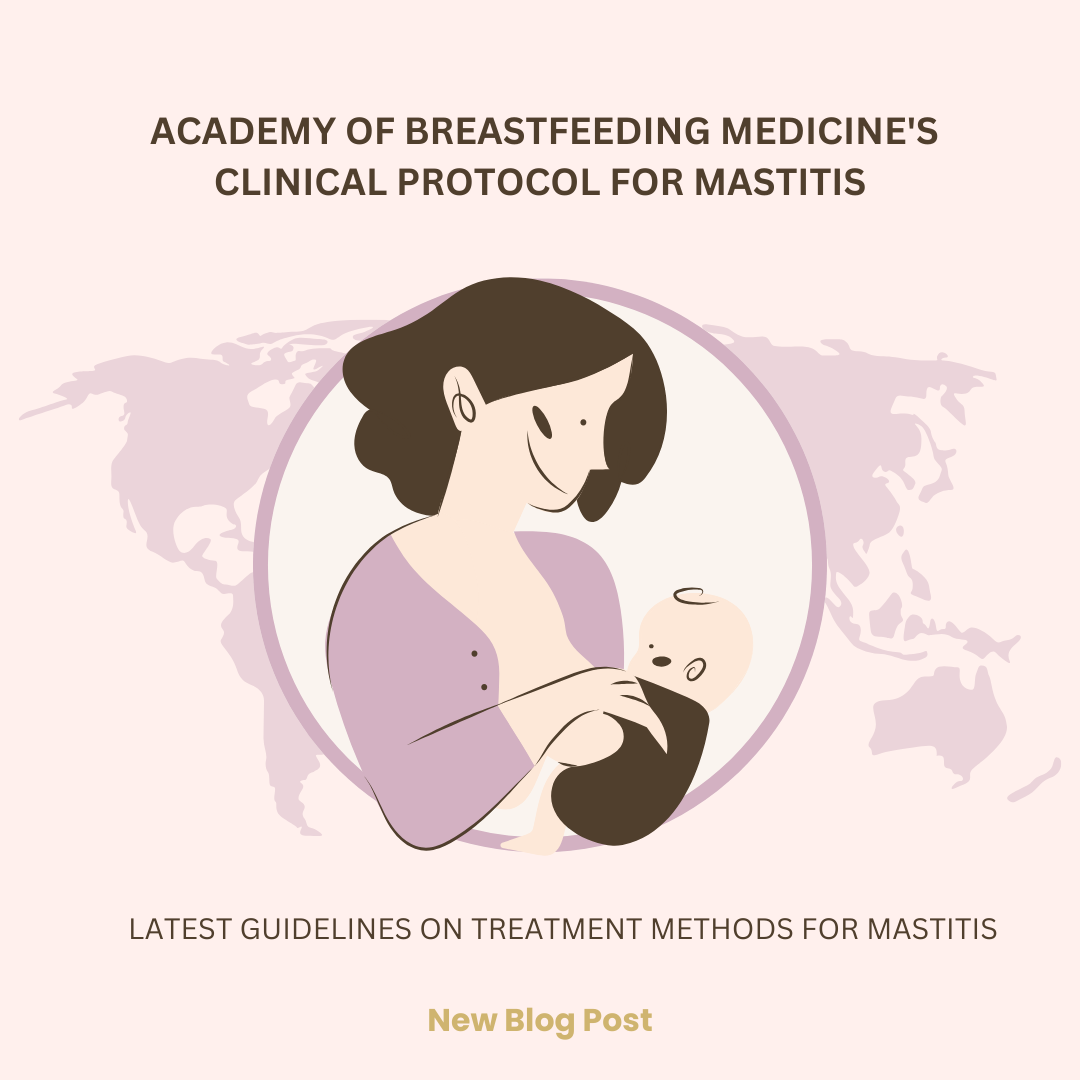Key Takeaways
• Mastitis stems from inflammation and oversupply, not clogged ducts.
• Avoid excessive pumping; use cold compresses instead of warm.
• Gentle care and conservative antibiotic use promote better recovery.
Mastitis, a common and often painful condition faced by breastfeeding mothers, has long been associated with clogged milk ducts and the need for frequent emptying of the breast. However, the latest clinical protocol from the Academy of Breastfeeding Medicine (ABM) reveals new insights that challenge these traditional approaches.
What is Mastitis?
Mastitis typically presents as breast pain, redness, swelling, and flu-like symptoms, often making breastfeeding difficult. Historically, it was believed that clogged ducts and incomplete milk removal were the primary causes. Treatment advice usually centered on frequent breastfeeding or pumping, warm compresses, and even aggressive breast massage to clear "blockages."
What’s Changed?
According to the new protocol, the root cause of mastitis isn’t clogged ducts but inflammation due to hyperlactation(oversupply) and dysbiosis, an imbalance in the breast’s microbiome. This means that overstimulating the breast through frequent pumping or excessive nursing may actually make the condition worse by exacerbating inflammation.
Updated Recommendations
- Limit Stimulation: The new advice focuses on avoiding excessive pumping and nursing, which can worsen hyperlactation and contribute to breast inflammation. Instead, it’s recommended to nurse on demand and pump only for comfort.
- Cold Compresses Over Warm: The protocol advocates for the use of cold compresses to reduce swelling and inflammation. Warm compresses, once commonly recommended, can actually increase inflammation and should be avoided.
- Gentle Care: Aggressive breast massage is no longer recommended, as it can increase inflammation. Instead, gentle lymphatic drainage is encouraged to help reduce swelling without causing additional damage.
- Conservative Use of Antibiotics: Antibiotics should be reserved for bacterial infections. Most cases of mastitis, which are inflammatory rather than bacterial, can resolve without antibiotics. The protocol also recommends using probiotics to help restore the balance of the breast microbiome.
- Pain Management: Over-the-counter medications like ibuprofen (which reduces inflammation) and acetaminophen (for pain relief) are encouraged to help manage discomfort during recovery.
Why These Changes Matter
The shift in understanding about mastitis highlights the importance of treating the inflammation rather than over-focusing on emptying the breast. This approach can prevent recurrent cases of mastitis and reduce the risk of nipple trauma or worsening symptoms caused by overstimulation.
By following these updated recommendations, breastfeeding parents can approach mastitis with a more informed and conservative treatment plan, leading to quicker recovery and less discomfort.
For a detailed look at the clinical protocol, you can visit the ABM website.
Mastitis is a challenging condition, but with the updated guidelines from the Academy of Breastfeeding Medicine, there are clearer, research-backed ways to handle it. The focus on reducing inflammation and avoiding overstimulation represents a significant shift in treatment philosophy, promising better outcomes for breastfeeding parents.
If you have any concerns about mastitis or are unsure about treatment, it’s always a good idea to consult a lactation consultant or healthcare provider.
At Newmom.me, we’re here to transform the motherhood narrative and make this process of finding support so much easier on you. We have a carefully curated, easy-to-use, and customizable platform where you can search by the type of service you need, location, and availability. You can easily sign up to review profiles of Lactation Consultants, Doulas, Mother’s helpers, and other services. Let us help you embrace motherhood with a full heart.





-42.png)

-41.png)